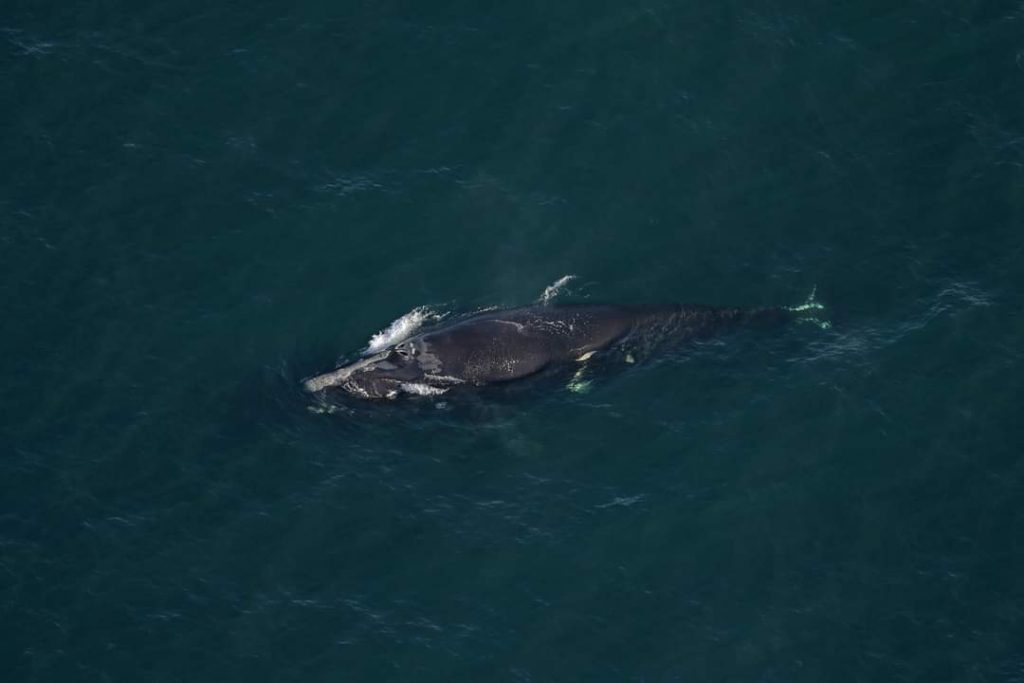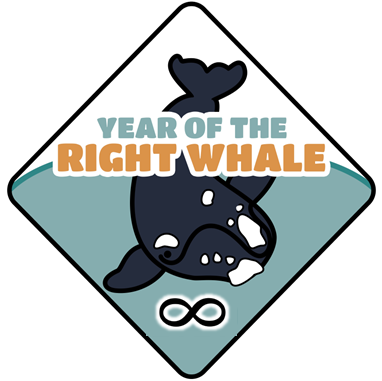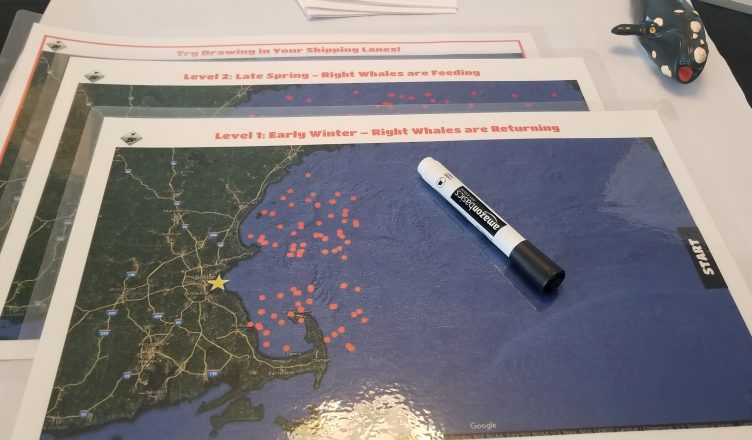One of the major threats to the North Atlantic right whale is vessel strikes. They could be small recreational boats that you or someone you know may own, or the largest freighters carrying hundreds of shipping containers. Studies have shown the larger and faster the boat, the more likely the result will be a serious injury or mortality. That said, any vessel strike is unhealthy for any whale. Right whales unfortunately are hit by ships quite often due to their feeding habits and slow swimming speed. They can be harmed by boat propellers which produce visible external wounds. They may also die from internal bleeding if hit by the front or side of a vessel. Death can be almost instantly, as was the case for Infinity’s 2021 calf–only a couple months ago. Some whales may carry on for months after a vessel strike (Infinity herself also sustained propeller wounds with this vessel strike, and she will continue to be monitored).

In most case, ships aren’t intending to hit whales, it is a result of co-occurrence. Ships and whales are in the same place at the same time. In an effort to reduce vessel strikes, regulations include speed limits and designated shipping lanes. However, right whales, like other animals, will go where the food goes, and it can often be hard to keep up with these changes and create new laws as appropriate. This was the case in Canada between 2017 and 2019. Several right whales were found dead due to vessel strikes in 2017, and the Canadian government responded with new restrictions in the preferred feeding area of the Gulf of St. Lawrence in 2018. In 2019, the right whale’s food source, copepods, was in a different part of the Gulf, thus making the new regulations obsolete. All animals are unpredictable, and it can be hard to protect them in such a vast area.
The goal of the shipping lane game is to get visitors to the booth to start thinking about buying locally. When there is less demand for products coming from across the globe, there will be less need for these larger vessels to travel back and forth. There are three sets of laminated maps that can be drawn on with dry erase marker which is easily wiped away between visitors. For level one, red dots on the map indicate right whale sightings in the early winter, when the whales start to return from the calving grounds off Florida, Georgia, and South Carolina. There are fewer sightings at this time. Ask visitors to draw lines where they think the shipping lanes should be. Level two has sightings in late spring, when the whales are feeding. There is a noticeable increase in sightings at this point. Again, ask the visitors to draw where they think the shipping lanes should be. You can then discuss the information on the back of these sheets, including where designated shipping lanes actually are. You can then have them fill out the blank sheet with ideal shipping lane locations, and continue the discussion of buying local.
As with other aspects of the Booth in a Box, the goal of the shipping lane activity is to hopefully inspire action. Every person you reach is important. If even one visitor to the booth pledges to buy local, even if it is only for some of the products they consume, this is a success.
There are a few ways you can help us with this:
- You can be a Booth Basecamp (anywhere in the country). This means a Booth in a Box lives at your site and it is available to other people locally who can “check it out” from you and use it. (We’ve modeled this off teacher kits from museums). This might be perfect for a nature center or other organization that is open to the public. We have some that are ready to ship to you for use!
- Be a Booth Host: Check out the website for locations of the Booths in a Box. Fill out the form and we will get you set up.
- Spread the word. Talk to friends, family, and coworkers about North Atlantic right whales and why it is important that we save them. There is plenty of information in our other blog posts.







